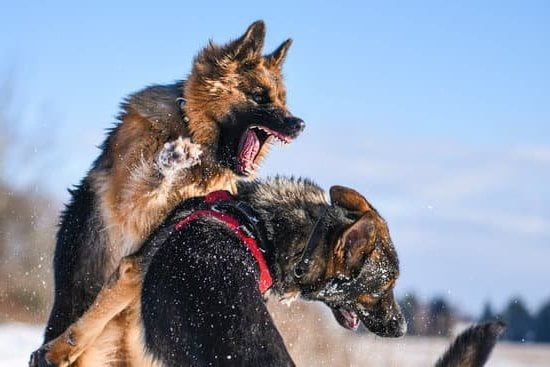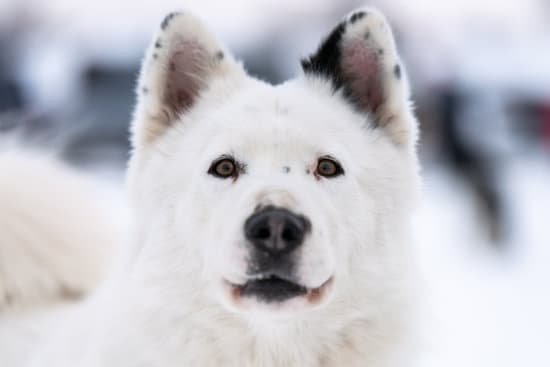Did Romans train dogs? In ancient Rome, dogs were highly valued and played significant roles in society. From hunting to military operations, canines were an integral part of Roman culture. This article will delve into the Roman canine culture, exploring their beliefs and attitudes towards dogs, historical evidence of training techniques, their use in military and hunting, famous Roman dogs, depiction in art and literature, contrast with modern practices, and the legacy on modern dog training.
The ancient Romans held a deep respect for dogs, considering them loyal companions and guardians. It is evident from historical records that they valued the training and relationship with their canine companions. With this in mind, it is essential to understand the role of dogs in ancient Roman society to appreciate the impact they had on daily life.
Throughout history, there have been various accounts of Roman dog training methods that provide insight into their techniques and understanding of animal behavior. By examining these practices, we can gain a better understanding of how Romans trained their dogs for specific tasks such as hunting or warfare.
Ancient Roman Beliefs and Attitudes Towards Dogs
The ancient Romans held complex and varied beliefs and attitudes towards dogs. These attitudes were shaped by the role dogs played in Roman society, as well as religious and cultural influences. In general, dogs were highly regarded and their presence was deeply intertwined with Roman daily life.
Religious Significance
In Roman mythology, dogs were associated with various deities such as Diana, the goddess of the hunt, and Laverna, the goddess of thieves and cheats. As a result, dogs were often seen as sacred animals and were used in religious ceremonies. Additionally, Romans believed that dogs possessed special abilities to detect supernatural beings or forces, so they were often used for protection against evil spirits.
Social Status of Dogs
Dogs held a significant place in Roman households, where they served not only as loyal companions but also as protectors and hunting companions. Wealthy Romans often kept large numbers of dogs for these purposes. However, despite their esteemed status in many households, there was also a practical aspect to owning dogs; they were sometimes used for menial tasks such as guarding the home or herding livestock.
Role in Roman Culture
The profound connection between Romans and their dogs is evident in various aspects of Roman culture. For example, there are numerous examples of ancient Roman art depicting dogs in different contexts such as hunting scenes or domestic settings. Moreover, literature from the time period frequently mentioned dogs, highlighting their importance in everyday life. Overall, the attitudes towards and treatment of dogs in Ancient Rome varied widely based on social status, geographic location, and individual beliefs.
Historical Evidence of Roman Dog Training Techniques
The ancient Romans were known for their love and appreciation of dogs, and historical evidence suggests that they indeed trained their canine companions. The Romans valued dogs not only as loyal pets but also as working animals, using them for various purposes such as hunting, guarding, and even in the military.
Historical evidence such as written records, artifacts, and archaeological findings provide us with insights into the training techniques used by the Romans to prepare their dogs for different roles. Some of these techniques include:
- Obedience Training: Romans trained their dogs to obey commands, especially those used for hunting or military purposes. They used positive reinforcement methods to teach their dogs to follow instructions and perform specific tasks.
- Socialization: It is believed that Romans socialized their dogs from a young age, exposing them to different environments and people to ensure they were well-adjusted and able to interact with others effectively.
- Specialized Training: Depending on the role the dogs were intended to fulfill, the Romans employed specialized training techniques. For example, hunting dogs would be taught how to track and retrieve prey, while guard dogs would be trained to protect property and alert their owners of potential threats.
These historical pieces of evidence reveal that dog training was an integral part of Roman society, reflecting their understanding of canine behavior and the importance of having well-trained dogs for various tasks. Such practices have certainly made a lasting impact on modern dog training techniques, influencing how we train and work with our furry companions today.
The Use of Dogs in Roman Military and Hunting
Canine Roles in the Roman Military
Dogs played an integral role in the Roman military, particularly in warfare and security. War dogs were commonly used for tasks such as sentry duty, tracking enemies, and guarding important locations. These dogs were often highly trained and equipped with spiked collars to effectively combat enemy soldiers. Canis Molossus, a large breed of dog known for its strength and ferocity, was especially favored by the Romans for these military purposes.
Canine Roles in Roman Hunting
In addition to their military duties, dogs were also widely utilized in hunting activities by the ancient Romans. Different breeds of hunting dogs were employed for various types of game, such as hare, boar, and deer.
These dogs were trained to track scents, flush out prey from hiding spots, and even retrieve downed game. The Romans recognized the importance of well-trained hunting dogs and held them in high regard for their contributions to leisure activities as well as providing food sources.
Legacy of Roman Dog Training in Military and Hunting Practices
The training methods developed by the Romans for military and hunting dogs have had a lasting impact on modern dog training techniques. Many contemporary approaches to working dog training can trace their roots back to the practices established by ancient Roman handlers. The use of positive reinforcement, discipline, and specific commands were all fundamental aspects of Roman dog training that continue to influence how dogs are trained for military service and hunting purposes today.
Famous Roman Dogs and Their Stories
Dogs were highly valued in ancient Roman society, not only as loyal companions but also as protectors and hunters. Many dogs achieved fame and recognition for their loyalty, bravery, and skills. One of the most famous Roman dogs was Margarita, the faithful companion of the poet Horace. Margarita was immortalized in some of Horace’s poems, portraying her as a beloved friend and an inseparable part of his life.
Another renowned Roman dog was Vierunca, owned by the stoic philosopher Seneca. Vierunca was known for her intelligence and loyalty, often accompanying Seneca in his writings and providing companionship during his contemplative moments. The stories about Vierunca’s devotion to Seneca have been widely celebrated in ancient Roman literature, further illustrating the deep bond between Romans and their canine companions.
One notable story from ancient Rome involves a dog named Biche who saved a child from a wolf attack. The remarkable tale depicts the dog’s courage and quick thinking in rescuing the child from imminent danger. Biche became a symbol of loyalty and bravery in Roman society, revered for her heroic act that exemplified the virtues valued by Romans. These stories reflect the high regard Romans held for dogs, highlighting their significant roles in various aspects of Roman life.
| Dog Name | Owner | Description |
|---|---|---|
| Margarita | Horace (poet) | A loyal companion immortalized in Horace’s poems |
| Vierunca | Seneca (philosopher) | An intelligent and loyal dog depicted in Seneca’s writings |
Depiction of Dogs in Ancient Roman Art and Literature
Ancient Roman art and literature provide valuable insight into the role of dogs in Roman society and culture. Dogs were a common subject in Roman artwork, often depicted in a variety of settings such as hunting scenes, domestic life, and even gladiator arenas. In these depictions, dogs were shown as loyal companions to humans, as well as skilled hunters and protectors.
In Roman literature, dogs were commonly mentioned in various texts, showcasing their significance in everyday Roman life. Writers often portrayed them as faithful companions to heroes and regular citizens alike. The famous poet Virgil even included a loyal dog named Maera in his epic poem “Aeneid”, emphasizing the deep bond between humans and their canine counterparts.
Furthermore, archeological findings have uncovered numerous artifacts depicting dogs in Roman households, including ornate mosaics and sculptures. These artistic representations serve as evidence of the high regard Romans held for their canine companions and provide a unique glimpse into the daily interactions between Romans and their dogs.
Some examples of depictions of dogs in Ancient Roman Art and Literature include:
- Mosaics showcasing hunting scenes with well-trained dogs assisting hunters
- Sculptures of domesticated dogs sitting at the feet of their owners
- Poems by famous writers celebrating the loyalty and bravery of dogs
Overall, these depictions highlight the significant role that dogs played within Roman society and emphasize the admiration and respect that Romans had for their four-legged friends.
Contrast of Roman Dog Training Methods With Modern Practices
The training of dogs in ancient Rome was vastly different from the modern practices we have today. While modern dog training prioritizes positive reinforcement and rewards-based methods, Roman dog training relied heavily on dominance and punishment. In fact, Roman trainers often used harsh physical corrections such as beatings and choke chains to control and discipline their canine companions.
In contrast, contemporary dog training emphasizes building a strong bond between the owner and the dog through positive reinforcement techniques like clicker training, treats, and praise. This approach focuses on rewarding good behavior rather than punishing bad behavior. Trainers also utilize techniques such as operant conditioning and desensitization to modify a dog’s behavior without resorting to force or intimidation.
Furthermore, the understanding of canine behavior has evolved significantly from ancient Rome to the present day. Today, trainers emphasize the importance of understanding a dog’s natural instincts and motivations, leading to a more collaborative and respectful approach to training. This shift in perspective has allowed for more effective communication between humans and dogs, resulting in a more harmonious coexistence between the two species.
| Roman Dog Training Methods | Modern Dog Training Practices |
|---|---|
| Relied on dominance and punishment | Prioritizes positive reinforcement and rewards-based methods |
| Used harsh physical corrections such as beatings and choke chains | Emphasizes building a strong bond through techniques like clicker training, treats, and praise |
| Did not prioritize understanding natural instincts and motivations of dogs | Emphasizes understanding canine behavior and motivations for more effective communication |
Legacy of Roman Dog Training on Modern Dog Training Techniques
The legacy of Roman dog training on modern dog training techniques is significant and has had a lasting impact on the way we train and work with dogs today. The ancient Romans were pioneers in understanding canine behavior and developing effective training methods that are still relevant centuries later. Their approach to dog training has influenced modern practices in various ways, from obedience training to working with dogs in different roles.
One of the key aspects of Roman dog training that has left a legacy on modern techniques is their emphasis on positive reinforcement. Romans understood the importance of rewarding good behavior and using motivation to train dogs, rather than relying solely on punishment or harsh methods. This approach has been integrated into modern dog training, where positive reinforcement is widely recognized as an effective and humane way to train and work with dogs.
Furthermore, the Romans were also known for their use of systematic and structured training methods for dogs, which has greatly influenced modern dog training techniques. From basic obedience commands to specialized tasks such as hunting or guarding, the Romans developed specific training regimens that have served as a foundation for contemporary dog training programs. Their focus on consistency, repetition, and clear communication with dogs has become fundamental principles in modern dog training methodologies.
Conclusion
In conclusion, it is evident that dogs played a significant role in ancient Roman society and culture. From being revered as loyal companions to serving in the military and hunting, dogs were an integral part of Roman life. The historical evidence of Roman dog training techniques further emphasizes their importance, showing that Romans invested time and effort in teaching and utilizing their canine companions.
The legacy of Roman dog training can still be seen today in modern dog training techniques. While methods may have evolved over time, the fundamental principles of building a strong bond with your dog and understanding their behavior can be traced back to ancient Rome.
The depiction of dogs in ancient Roman art and literature also reflects the deep affection and value that Romans placed on these animals, leaving a lasting impact on how dogs are viewed and treated in society.
Overall, the study of the role of dogs in ancient Roman society sheds light on the ways in which these animals were not only valued but also integrated into various aspects of daily life. From their symbolic representation in art to their practical use in military operations, dogs held a special place in Roman culture and continue to be cherished companions to humans even today.
Frequently Asked Questions
Did Romans Domesticate Dogs?
Yes, the Romans did domesticate dogs. They were known to keep various breeds of dogs for different purposes such as hunting, guarding, and companionship. Dogs were considered valuable assets in Roman society and were often depicted in art and literature.
What Did the Romans Think of Dogs?
The Romans held a complex and varied view of dogs. While they valued them for their loyalty, protection, and hunting abilities, they also associated them with negative traits such as dirtiness and untrustworthiness. This duality is reflected in the differing roles that dogs played in Roman society – from beloved companions to sacrificial offerings.
Did the Romans Use Dogs to Fight?
Yes, Romans did use dogs in combat and fighting activities. They trained specific breeds such as Molossian hounds for warfare purposes, using them in battle to attack enemies or guard important locations. These war dogs were highly regarded for their ferocity and loyalty on the battlefield.

Welcome to the blog! I am a professional dog trainer and have been working with dogs for many years. In this blog, I will be discussing various topics related to dog training, including tips, tricks, and advice. I hope you find this information helpful and informative. Thanks for reading!





